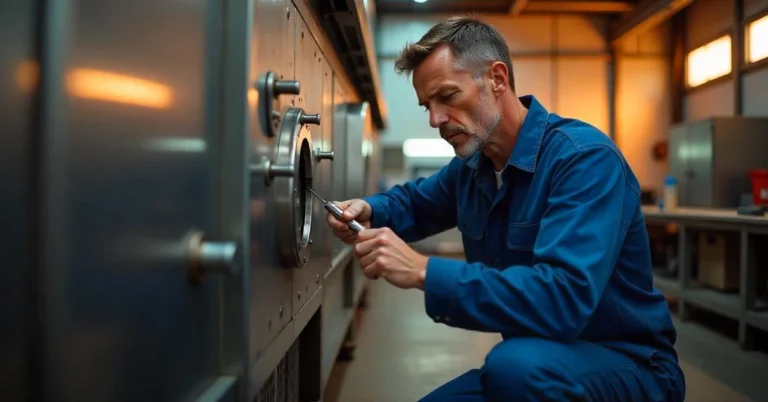Industrial parts washers are critical equipment in many manufacturing and maintenance operations, and when they’re not working properly, it can bring production to a costly halt. How do you troubleshoot common issues with industrial parts washers?
The most effective way to troubleshoot industrial parts washers is to follow a systematic approach: check water levels and quality, inspect filters and nozzles for clogs, verify pump operation, and ensure proper chemical concentration levels.
While this basic troubleshooting sequence covers the fundamentals, several specific problems require unique diagnostic approaches and solutions. Understanding these distinct issues and their remedies will help you quickly resolve problems and prevent future breakdowns.
Common Signs That Your Parts Washer Needs Immediate Attention
When your parts washer starts showing signs of trouble, quick identification can prevent major breakdowns. Watch for unusual noises from the pump, often indicating cavitation or bearing issues. Even with proper chemical concentrations, decreased cleaning effectiveness typically suggests clogged spray nozzles or failing pump pressure. If you notice a cloudy or foul solution, this indicates filtration problems or chemical imbalances that need immediate attention.
How To Maintain Proper Chemical Balance In Your Parts Washer
Chemical concentration is crucial for effective cleaning performance. Test the chemical levels daily using titration strips or digital meters, adjusting as needed to maintain manufacturer-recommended levels. Temperature also plays a vital role – most industrial cleaning solutions work best between 140-180°F. If the temperature drops below the recommended range, heating elements may need inspection or replacement. Remember that hard water can affect chemical effectiveness, so regular water quality testing and appropriate water conditioning may be necessary.
What To Do When Your Parts Washer Won’t Start Or Stops Mid-Cycle
A non-starting or stopping washer often indicates electrical issues or activation of safety mechanisms. First, check all emergency stop buttons and properly engage door safety interlocks. Verify that circuit breakers haven’t tripped and inspect electrical connections for signs of wear or damage. If the machine stops mid-cycle, this could indicate overload protection activation – check for debris blocking the pump intake or excessive load weight. For machines with electronic controls, error codes can provide valuable diagnostic information, so keep the manual handy for code interpretation.
How To Optimize Spray Patterns And Pressure For Maximum Cleaning Efficiency
Proper spray patterns are essential for thorough cleaning results. Inspect nozzles monthly for wear, calcium buildup, or blockages that can distort spray patterns. Most industrial washers operate optimally between 40-60 PSI for general cleaning, though specific applications may require different pressures. If you notice uneven cleaning patterns or missed spots on parts, systematically check each nozzle’s performance by observing spray patterns individually. Remember that nozzle orientation is just as important as condition – ensure all nozzles are properly aligned according to the manufacturer’s specifications.
When To Repair Versus Replace Your Industrial Parts Washer
Making the repair-or-replace decision requires careful consideration of several factors. Generally, replacement is the better option if repair costs exceed 50% of the replacement cost. Age is another crucial factor – washers over 10 often have outdated technology and may be less energy-efficient. Consider also the frequency of breakdowns; if you’re experiencing monthly issues despite regular maintenance, it might be time for a replacement. Look at parts availability, too – if replacement parts are becoming scarce or expensive due to the model’s age, upgrading to a newer unit could be more cost-effective in the long run.
Taking Action To Prevent Future Washer Problems
Now that you understand the common troubleshooting approaches for industrial parts washers, the most important step is to create a daily maintenance checklist that includes chemical concentration testing, spray pattern inspection, and filter checks. Post this checklist near your parts washer and ensure all operators follow it consistently to prevent many of the issues discussed above from occurring.
Keep your operations smooth—visit nextmagazine.co.uk for more expert tips on how to troubleshoot common issues with industrial parts washers!

